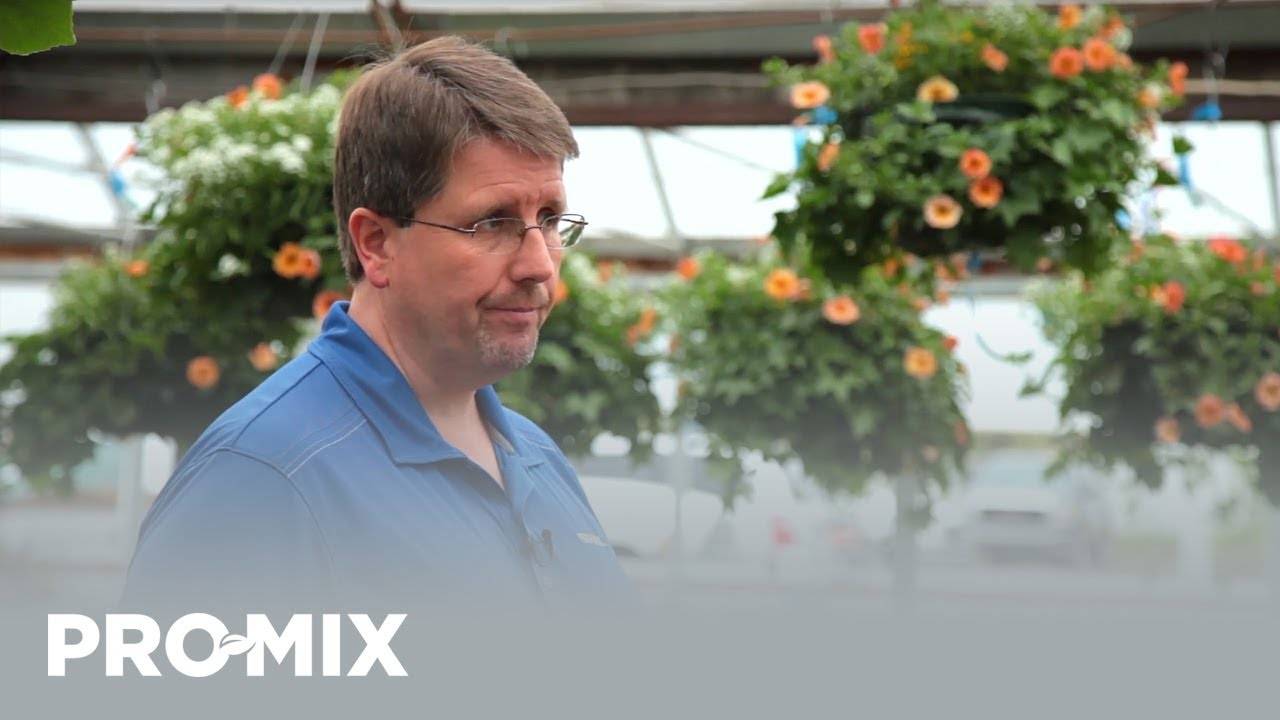Greenhouse Herb and Vegetable Production - Part 4/4 - Growing Media

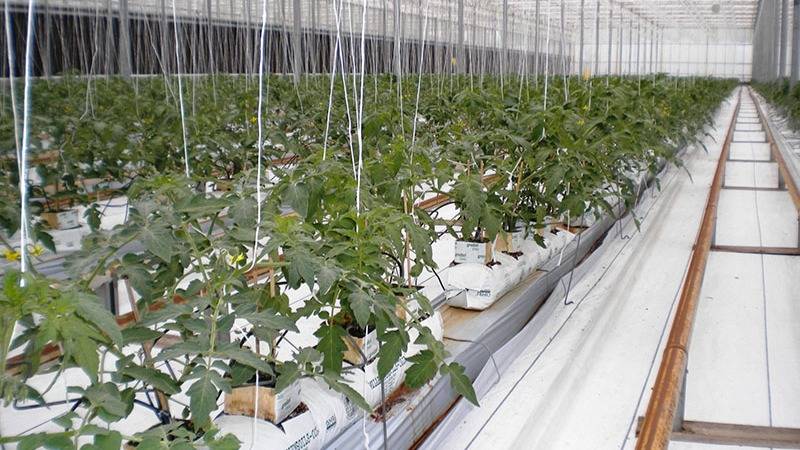
Physical Properties of Growing Media
Substrates are engineered to provide ideal physical properties for crops by looking at the substrate's particle sizes, water holding capacity, air porosity, solid content and the height and shape of the containers used. Hydraulic conductivity is important to know to avoid water stress and to ensure that roots have water in their vicinity, especially under high water demand. In other words, the substrate can have optimum water content, but it is not good if roots are using water faster than it can be transferred from one part of the container to the roots.
Irrigation
Irrigation frequency is an important consideration when it comes to selecting the ideal substrate. As mentioned in previous articles, the irrigation frequency will depend on the water-holding characteristics of the substrates, container height, plant stage, aerial environment and the capability of the irrigation system to supply water when needed. A substrate that has high water retention at medium suction (-50 cm H2O) will require less frequent irrigation than a substrate with low water retention at medium suction. One advantage of a substrate with low water retention is it can be easily leached if there is an accumulation of fertilizer and/or salts from the water.
Grower’s Watering Technique
There are two schools of thought when it comes to watering: those who grow wet and those who grow dry. Wet growers understand plant water requirements and irrigation frequency and duration to produce quality crops. They water the plants just when needed, and adjust the irrigation schedule based on environmental conditions and plant stage. On the other hand, those who grow dry can have difficulties with irrigation scheduling and often have problems with over-irrigating, which leads to poor dry down of the substrate and root disease problems. A dry grower should use substrates with low water retention at medium suction to avoid oxygen deprivation.
Chemical Properties of Growing Media
For inert substrates (rockwool, perlite, sand), water pH is very important; it has to be maintained from 6.0 to 6.5 to maximize nutrient uptake. These substrates have low CEC, so they hold few cations (NH4, K, Ca, Mg, Fe, Mn and Zn). All nutrients must be provided by the fertilizer solution and remember these nutrients easily leach due to the low CEC. On the other hand, when using substrates with moderate CEC (peat, coir and bark) the water alkalinity, growing medium pH, electrical conductivity (E.C.), and fertilizer management need to be monitored closely.
The main reason is that the substrate will retain cations (especially K and Ca) and bicarbonates (which are like limestone) and the nitrogen form will influence the pH of the growing medium (nitrate is basic and ammonium is acidic).
Peat
Peat is a generic term for accumulated plant debris that decomposes at slow rates in water-saturated environments due to the absence of oxygen and nutrients (peatlands). Large accumulations of peat can be found between latitudes 50-60˚N. There are several types of peat such as sphagnum peat moss, sedge peat, hypnum peat and others. Premier Tech Horticulture uses sphagnum peat moss in all its products. Sphagnum peat moss is virtually weed free, pathogen-free and it can be compressed.
Sphagnum peat moss can hold and release water at low suctions while providing good aeration for roots. In greenhouse agriculture, it is used as a substrate component to improve water holding capacity, water retention, air porosity and CEC. Its total porosity is 90-95%, air-filled porosity 18-25% and bulk density of 0.07-0.11 g/cm3. At medium suction, its volumetric water content is 40%. It has a low pH = 3.8-4.2, moderate CEC of 150-250 meq/100g and it does not contain salts. Sphagnum peat moss can be used for a wide variety of applications depending on the fiber length; short fiber for germination and long fiber for plants which prefer high porosity.
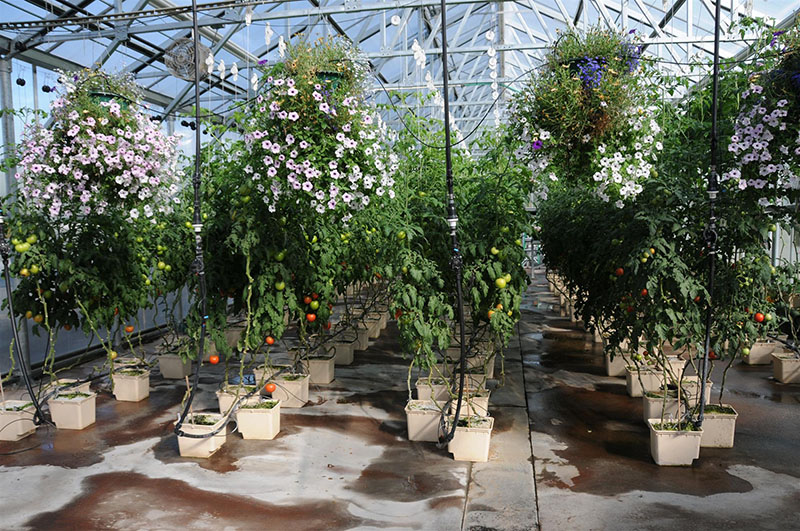
Coconut coir
Coir comes from the coconut husk. The major suppliers of coir are located in Sri Lanka, India, the Philippines, Indonesia, Mexico, Costa Rica and Guyana. The chemical and physical properties depend on the country of origin. Coconut coir is naturally high in salts, especially potassium and chloride; therefore, it is necessary to leach these salts before manufacturing and again before transplanting into it. Its pH is slightly acidic, so it requires little lime and has moderate to low CEC of approximately 50 meq/100g. Coconut coir has a total porosity of about 80%, a water-holding capacity of approximately 40%, and an air-filled porosity of 13% (all on a volume basis) and a bulk density of 0.08 g/cm3.
Coconut coir comes compressed in blocks and is available in three different particle sizes: dust, fibers and chunks. It will expand up to five times its compressed volume by adding water. A typical coconut coir slab has a length of 100 cm (39.4 in), width of 15 or 20 cm (5.9-7.8 in) and height of 8, 10, 12 or 15 cm (3.1-5.9 in) depending on the crop grown and particle size of the coir. Additionally, it can come in grow bags (open top bags) with dimensions of 20 cm (7.9 in) long x 18 cm (7.1 in) wide x 70 cm (27.5 in) high; this type of grow bag is recommended for cucumbers. Coconut coir maintains its structure over time and it can be reused for several crop cycles but must be sterilized before transplanting a new crop into it. However, after 2-3 years, the coconut coir decomposes which increases its water content and reduces air-filled porosity.
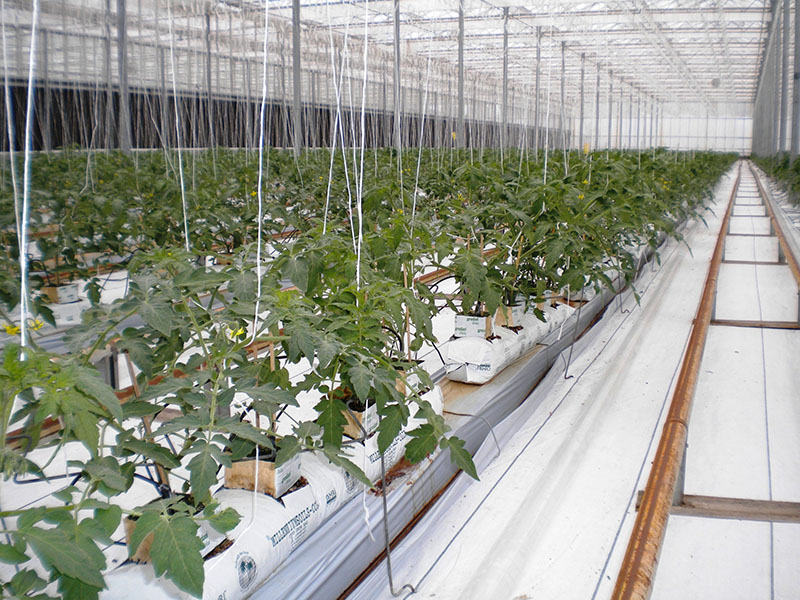
Composted Bark
Composted bark is mainly used for organic production. Bark can be composted or aged; but it is best that it be composted so it will not rob nitrogen from the crop, decompose further in the container (this process generates heat which can burn plant roots and rob oxygen from them), and not contain viable weed seed or pathogens. Disadvantages of bark include the source of plant material (hardwood vs. softwood), initial salt content, particle size, time required to compost it and availability throughout the year. Its pH is close to neutral, the EC and phosphate can be high and it has a CEC up to 200 meq/100g (depending on the source). Pine bark, the most common type of bark, has 80% total porosity, about 22% air-filled porosity (both by volume), bulk density of 0.2 g/cm3 and CEC of 50 meq/100g.
Sand
Sand has been used as a substrate to grow plants for a long time. The porosity and water-holding capacity depend on the particle size. Sand can be placed on beds with plastic liners along the length of the greenhouse. Depending on the source, the pH can range from 3-6 and CEC close to zero. It has a high bulk density at 1.6 g/cm3, 35% total porosity and 7% air-filled porosity. The water content of coarse sand with particle sizes of <2 mm is 15%; if this type of sand is used in sub-irrigation, then the solution will only wick up to 1.5 cm (0.6 in) above the water level. The recommended maximum container depth is from 20-40 cm (7.9-15.7 in) when this type of sand is used as a substrate.
Perlite
Perlite is a volcanic, glass rock that contains a small amount of water that, when heated to 1000˚C, expands up to 20 times its original size. This gives perlite many internal pores that reduce its bulk density to 0.1 g/cm3. It is pathogen and weed-free due to high processing temperatures, non-toxic and lightweight. Perlite is considered inert due to its low CEC (3 meq/100g), neutral pH and EC of nearly zero. The physical properties depend on the particle size; small particles retain more water and less air than large particles. In general, perlite has about 75% total porosity and 30% air-filled porosity (both by volume).
Because of its rough structure, it can be used by itself or as a substrate component. In greenhouse vegetable production, perlite is used in 28-liter slabs (length=100 cm (39 in) x width=20 cm (7.9 in) x height = 15 cm (5.9in)) which can support three tomato or two cucumber plants. Also, perlite substrate is often used in 3-gallon Bato buckets which can support two tomato plants. Perlite can be reused for 5 years without losing its physical and chemical characteristics. Steam or chemical sanitation is required before a new crop is transplanted into perlite.

Rockwool
Rockwool is a combination of basalt rock, coke and limestone. This mixture is heated to 1600˚C and the product is spun at high velocities to produce fibers of 0.005 mm. Rockwool is offered in slabs or blocks. It is inert and sterile (pathogen and weed-free). Slabs are used to grow crops and blocks are used for germination purposes. Rockwool slabs come in different sizes and shapes; the fibers are arranged parallel, vertically or a combination of both within the same slab. Rockwool slabs used for tomatoes have dimensions of 100 cm (39.3 in) long, 12 cm (4.7 in) wide and 7.5 cm (3.0 in) high and for cucumbers 100 cm (39.3 in) long, 20 cm (7.9 in) wide and 7.5 cm (3.0 in) high.
Rockwool has 96% total porosity, 11% air-filled porosity, 91% water-holding capacity (all by volume) and a bulk density of 0.85 g/cm3. Rockwool easily releases most of its water to plants, unlike organic materials like peat, bark and coir. The pH is alkaline around 8 and the EC is negligible. Irrigation management is crucial; if the irrigation system breaks, plants can be vulnerable because they will take all water from the substrate in a matter of minutes. The advantage is that salts can be easily leached without the use of high volumes of water. Rockwool can be reused for up to 3 years with proper sanitation. However, some European countries and Japan have legislation that prohibits the disposal of rockwool in landfills, so its use has declined.
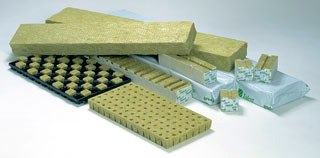
Grower Mixes
Over the years, substrate companies and universities have and continue developing growing media by blending the above materials or with parboiled fresh rice hulls, pumice, vermiculite, expanded clay, polyurethane or polystyrene. All of these can be used as substrate components as they are engineered to address the aeration and watering needs of plants.
Recently, Premier Tech Horticulture introduced PRO-MIX HPCC MYCORRHIZAE a growing medium formulated with peat, chunk coir, perlite, limestone, starter fertilizer charge and MYCORRHIZAE. PRO-MIX HPCC MYCORRHIZAE was developed to take advantage of the water retention and CEC of peat and combine it with the highly stable structure and porosity of chunk coir. It works well for long-term vegetable crop cycles as well as short-term vegetable crops like cucumbers and herbs. MYCORRHIZAE is a natural soil fungus that benefits vegetables and herbs by growing in, on and beyond the root system, essentially increasing the surface area of the root system, to help plants improve water and nutrient absorption. MYCORRHIZAE may also help suppress certain soil-borne pathogens.
All of the components mentioned above are ideal for growing vegetables and herbs. Remember, there is not one ideal substrate for all crops, but changing the container size and depth could accommodate a crop’s preferred water-holding capacity and air porosity. Ultimately the grower has total control over the substrate and he/she can manipulate the irrigation/fertilization to produce high-quality crops.
